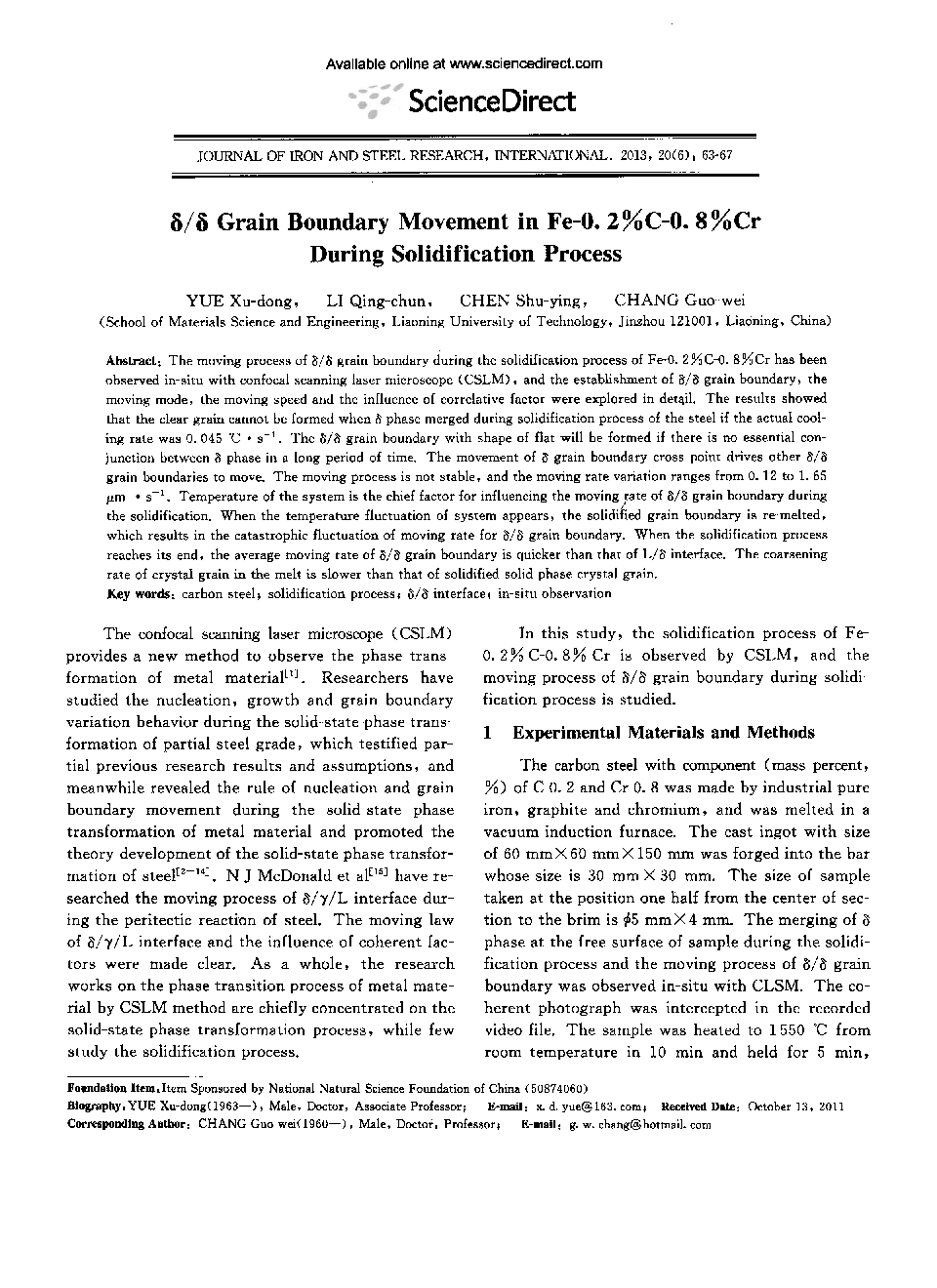| Article ID | Journal | Published Year | Pages | File Type |
|---|---|---|---|---|
| 1628877 | Journal of Iron and Steel Research, International | 2013 | 5 Pages |
The moving process of δ/δ grain boundary during the solidification process of Fe-0. 2% C-0. 8% Cr has been observed in-situ with confocal scanning laser microscope (CSLM), and the establishment of δ/δ grain boundary, the moving mode, the moving speed and the influence of correlative factor were explored in detail. The results showed that the clear grain cannot be formed when δ phase merged during solidification process of the steel if the actual cooling rate was 0. 045 °C · s−1. The δ/δ grain boundary with shape of flat will be formed if there is no essential conjunction between δ phase in a long period of time. The movement of δ grain boundary cross point drives other δ/δ grain boundaries to move. The moving process is not stable, and the moving rate variation ranges from 0. 12 to 1. 65 µm · s−1. Temperature of the system is the chief factor for influencing the moving rate of δ/δ grain boundary during the solidification. When the temperature fluctuation of system appears, the solidified grain boundary is re-melted, which results in the catastrophic fluctuation of moving rate for δ/δ grain boundary. When the solidification process reaches its end, the average moving rate of δ/δ grain boundary is quicker than that of L/δ interface. The coarsening rate of crystal grain in the melt is slower than that of solidified solid phase crystal grain.
